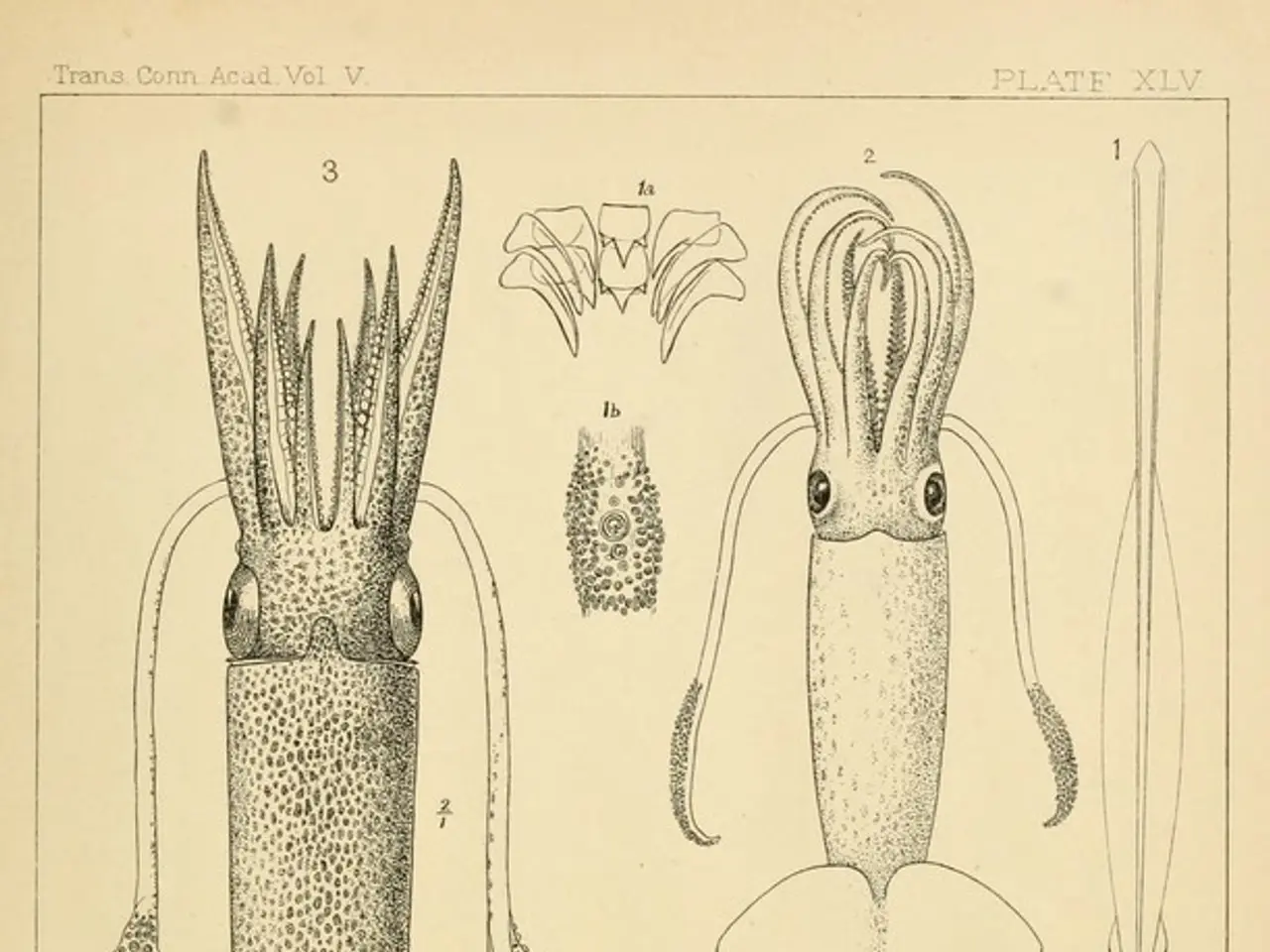Ancient Reptile with Mohawk-like Structure Crafted from Unusual Protrusions, Pertaining to a 247-Million-Year Age
In a groundbreaking study published in the journal Nature, researchers have discovered that the extinct Triassic reptile *Mirasaura grauvogeli* had a row of long, feather-like structures running down its back, challenging our understanding of skin appendages such as feathers and hair.
*Mirasaura*, belonging to the Drepanosauromorpha clade, is older than dinosaurs and not closely related to them. The unusual skin appendages on this reptile, first spotted by researchers in 2019, are elongate, feather-like crests formed by serial integumentary appendages along its back.
These structures, which closely resemble feathers, evolved independently and are not homologous to true feathers or mammalian hair. Melanosomes preserved in these appendages match those found in feathers, but their morphology—being solid blades rather than branched structures—differs significantly, indicating convergent evolution of complex skin structures in this lineage.
The most likely function for the appendage on *Mirasaura grauvogeli's* back was related to signalling, either for communication or to deter predators. Unlike feathers, these structures could not have provided warmth or assisted with flight.
The study, led by author Stephan Spiekman, provides the first direct evidence that complex skin appendages formed early on in reptile evolution, in groups not closely related to birds and extinct dinosaurs. The underlying genetic blueprint for these appendages may have first appeared in the early amniotes, a clade of vertebrates encompassing birds, mammals, and reptiles.
This discovery sheds a new light on the evolution of complex skin features, suggesting that they evolved multiple times independently across amniotes. The finding challenges previous assumptions by suggesting that the genetic basis for complex skin appendages existed very early in amniote evolution, predating the divergence of modern reptiles, birds, and mammals.
In conclusion, the skin appendages on *Mirasaura grauvogeli* provide evidence of an unusual, independently evolved integumentary system in a Triassic reptile, likely serving display functions and indicating a more ancient and diverse evolutionary history of complex skin features than previously known. The study has rewritten our understanding of skin appendages such as feathers and hair, suggesting that their evolution was more complex and diverse than previously thought.
- The unexpected finding in the study published in Nature has revealed that the genetic blueprint for complex skin appendages might have originated in early amniotes, a group that includes reptiles, birds, and mammals, implying a connection between skin care and environmental science.
- As our understanding of skin appendages evolves, it becomes clear that feathers, hair, and other complex structures have developed through the process of evolution multiple times independently among various species, which may have implications for therapies and treatments in medical-conditions related to skin health and wellness.
- The discovery of these unique skin appendages on the reptile Mirasaura challenges long-held beliefs about the history of feathers and hair, emphasizing the importance of research in dissecting the mysteries of both science and space and astronomy.
- Given that the unusual integumentary system on Mirasaura could have been present in the early stages of amniote evolution, scientists may now further explore the connection between skin appendages and environmental factors such as climate change, as well as how the evolution of these structures affects fitness-and-exercise and overall health-and-wellness.
- Furthermore, the investigation of the evolution of skin appendages could lead to groundbreaking advancements in nutrition, as nutrition plays a crucial role in the development and maintenance of both simple and complex skin structures.
- The impact of this study extends beyond the field of palaeontology, as it reinforces the notion that the study of the past, particularly in evolutionary biology, can offer valuable insights into our present understanding of health, wellness, and the environment and its effects on various aspects of life, from nutrition to space exploration.




